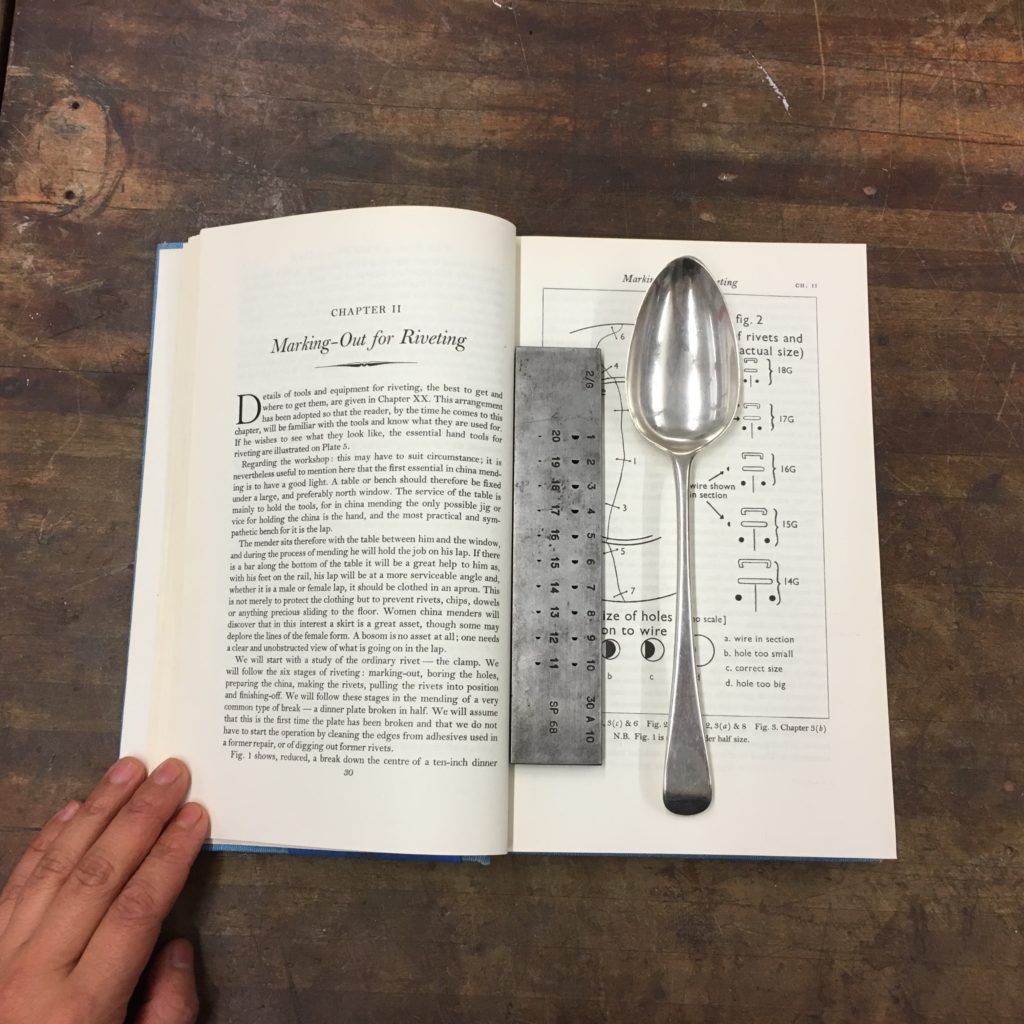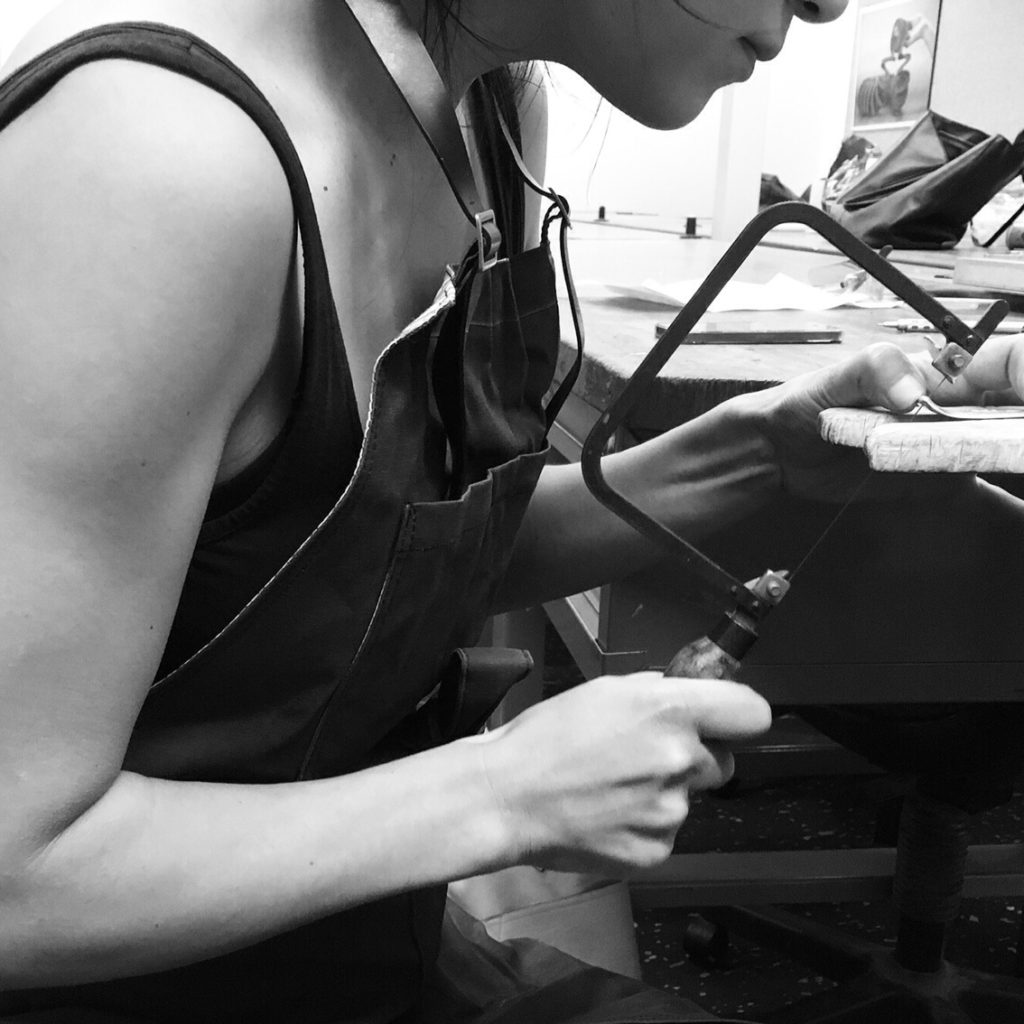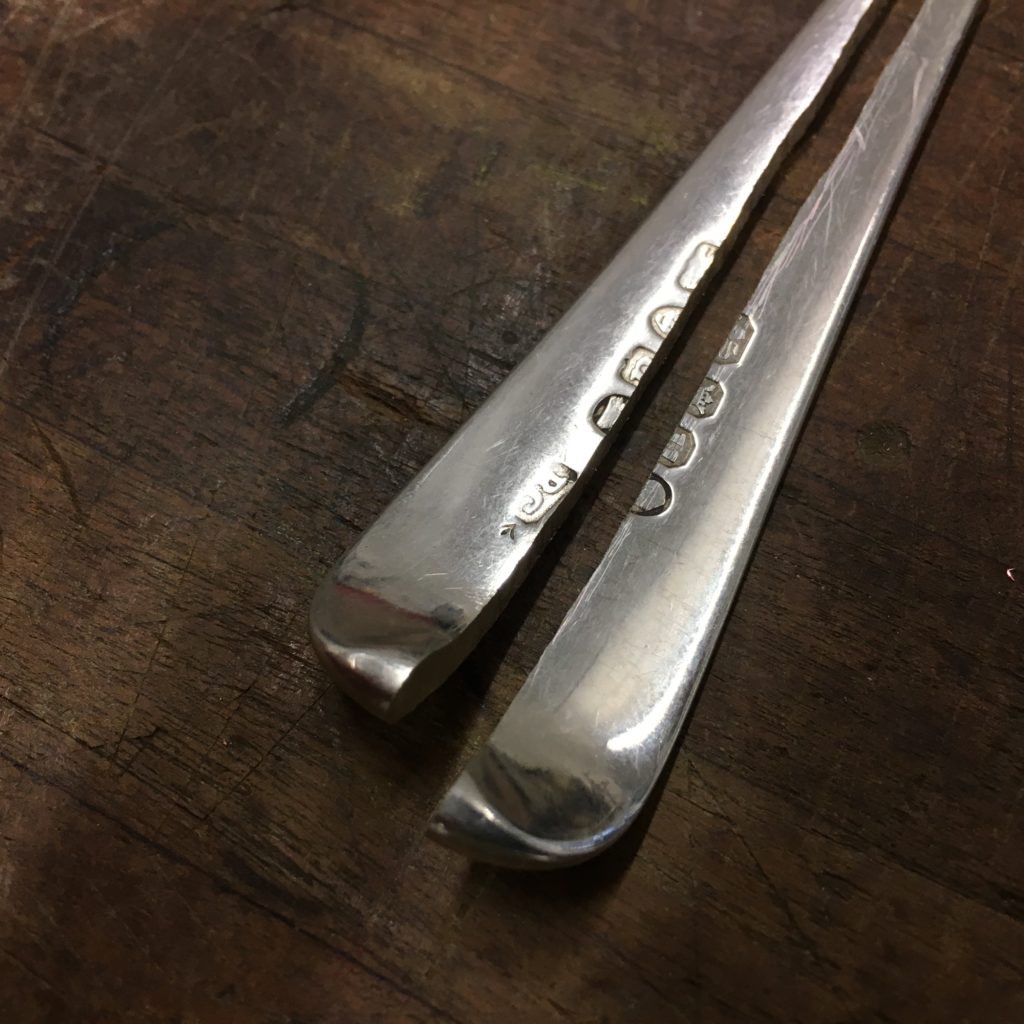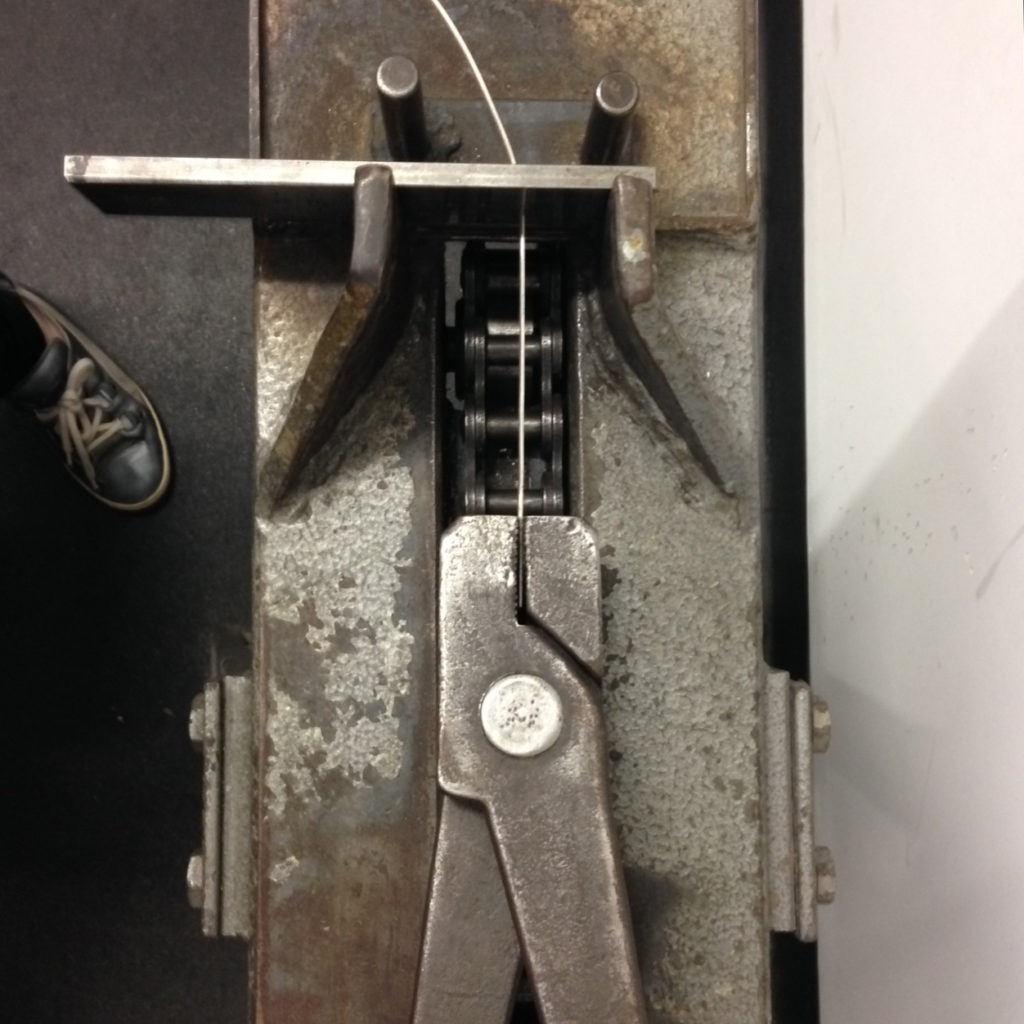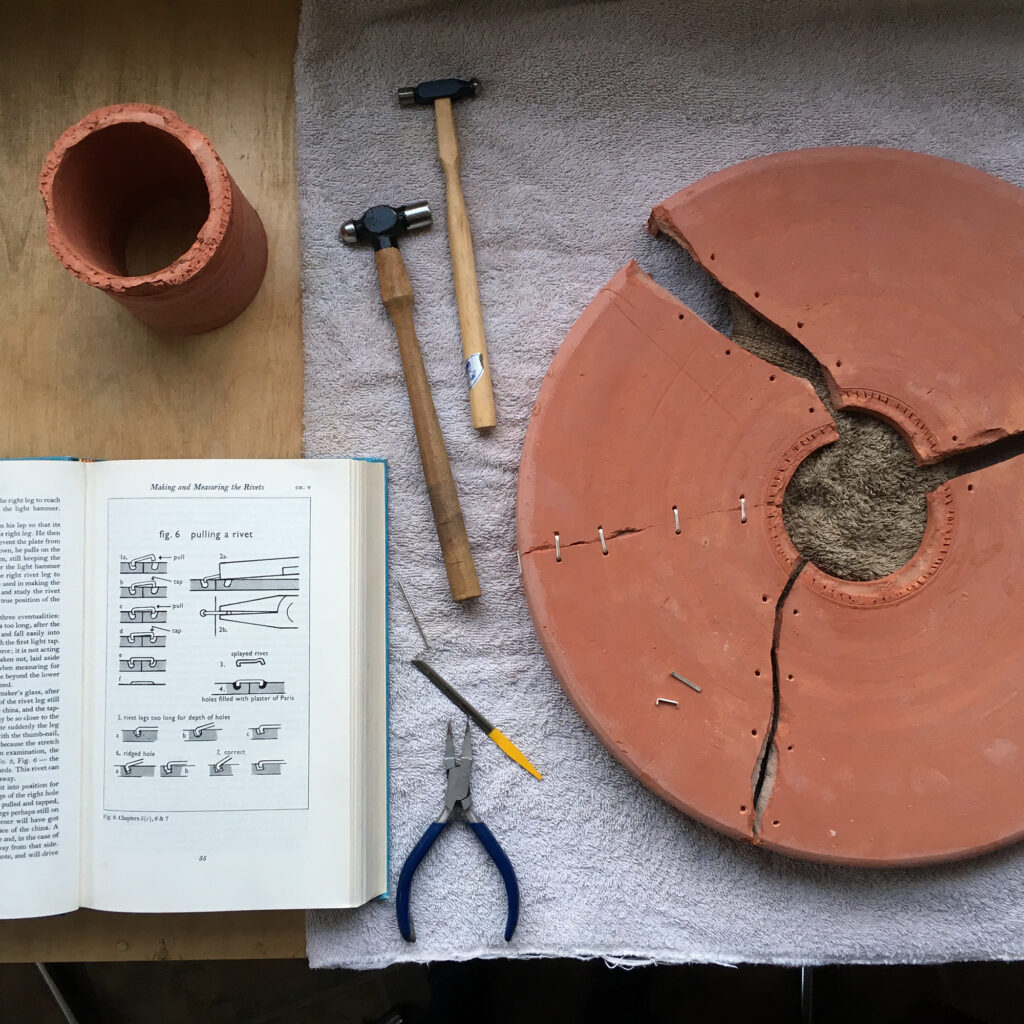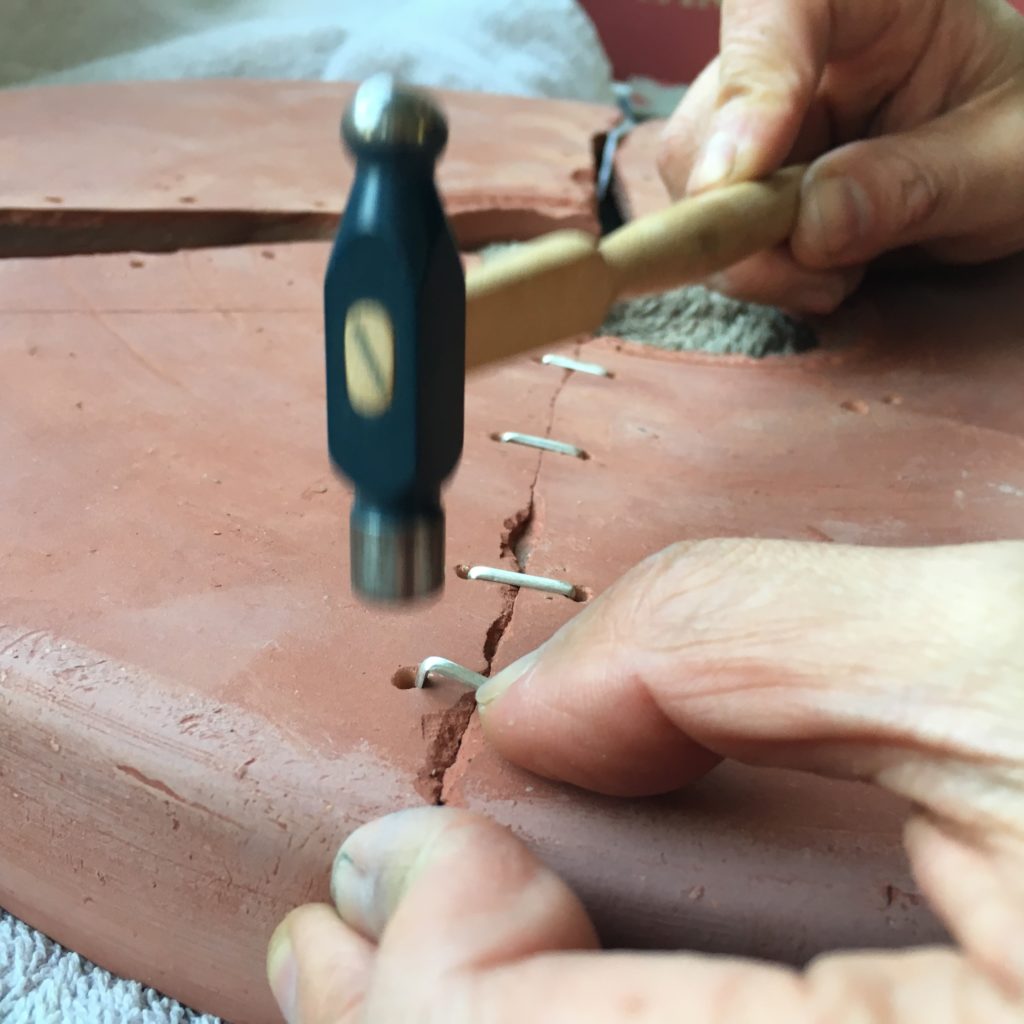Repaired Jugaad
Trent Jansen’s Jugaad With Pottery High Tray
repaired by Guy Keulemans and Kyoko Hashimoto using silver staples cut from a Georgian spoon.
“Jugaad is the Indian make do, with a slight twist. Jugaad is doing just enough with what you have, and it is also figuring it out as you go ~ improvising, rather than planning the direction forward.”
– Trent Jansen
This Jugaad plate, designed by Trent Jansen in India in 2016 and made by Abbas Galwani, in Dharavi, Mumbai, broke en route to Australia. It is repaired with a small volume of rabbit-skin glue around the base, and on the sides and underside with hand made sterling silver staples cut from a late Georgian serving spoon. The spoon fragment was annealed and pulled through a half-round draw plate several times until it achieved the right shape and gauge recommended by C.S.M Parsons and F.H Curl, the authors of China Mending and Restoration (1963). This book, perhaps the most comprehensive text on traditional ceramic stapling, was written on the eve of the technique’s almost complete disappearance. It has been made obsolete by the widespread use of petrochemical synthetic glues and, in the West at least, the decline of repair industries and the rise of hyperconsummerist mentalities of ‘break and buy again’.
As I’m going to discuss in a forthcoming article, this ‘break and buy again’ mentality is facilitated by cheap energy, a consequence of fossil fuel extraction. Simply put, its just a lot cheaper to produce, kiln fire and then sell consumer ceramics now than it was in the 18th and 19th centuries, or before, when ceramic stapling was popular. Theoretically, this is an effect of what is known as ‘fossil capitalism’. This theory pretty much applies to every aspect of social, cultural and economic life since the 20th century. With this work we’re attempting to challenge this paradigm by presenting perplexities. Before it broke, the work was valuable as an object designed by Jansen, a celebrated, award-wining Australian designer, but it was also made by a kind of slum potter, who works inexpensively in low temperature-fired terracotta, a cheap ceramic. To repair it, we cut silver from a Georgian spoon, typically perceived as an expensive, rare antique*, though we could have used cheaper, purpose-drawn brass wire.
The repair might draw to mind global or colonial relations – a plate made in India, transported to Australia, repaired with English silver using an originally Chinese technique – but to us the project is a speculative design. It imagines a future world of unexpected energy poverty, in which synthetic glues are a thing of the past, metal ores depleted, old technologies resurrected by necessity, and the repair of a plate is more important than the use of a spoon. Given the far reaching consequences of petrochemical industry – not least the degradation of the oceans from plastic and the transformation of our climate from energy waste, we wish to ask: what can we do if we reject the products of oil and fossil fuel?
This work was shown at Nishi Gallery in part of the exhibition ‘Porosity Kabari‘, with works by Richard Goodwin, Trent Jansen and Ishan Khosla, in 2017 and will be exhibited again at the Australian Design Centre in 2018.
* Georgian cutlery is not actually that rare, but the silver is very good quality, as we found during the drawing and annealing process. The idea to use a Georgian spoon was also a bit of jugaad ‘make do’ – I knew that my mum had a spare one that wasn’t matched to a cutlery collection, and I kindly asked for it. She didn’t quite know we were going to cut it in half.

